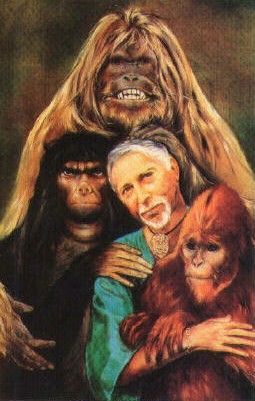 Cryptozoology is a kind of pseudo science that can be defined as the study and search for animals which do not belong to the zoological categories of existing species. The term Cryptozoology is often credited to the zoologist Bernard Heuvelmans. Heuvelmans’ 1955 book traces the origins of the discipline to Anthonie Cornelis Oudemans and his 1892 study, The Great Sea Serpent. The first published use of the word Cryptozoology was in 1959 by Lucien Blancou.
Cryptozoology is a kind of pseudo science that can be defined as the study and search for animals which do not belong to the zoological categories of existing species. The term Cryptozoology is often credited to the zoologist Bernard Heuvelmans. Heuvelmans’ 1955 book traces the origins of the discipline to Anthonie Cornelis Oudemans and his 1892 study, The Great Sea Serpent. The first published use of the word Cryptozoology was in 1959 by Lucien Blancou.
The term ‘cryptozoology’ derives from the Greek work ‘kryptos’, meaning ‘hidden.’ ‘unknown,’ ‘secret,’ ‘enigmatic,’ ‘mysterious’; hence literally the ‘study of hidden life’.
Heuvelmans maintained that Cryptozoology has to be undertaken with an open-mind approach. He also stressed that attention should be given to local, urban and folkloric sources regarding such creatures. Heuvelmans has also argued that folktales can often contain small grains of truth and important information regarding undiscovered organisms.
"To give a precise definition of it, cryptozoology is the scientific study of animal forms, the existence of which is based only on testimonial or circumstantial evidence, or on material proof judged insufficient by some." Dr. Bernard Heuvelman, On the Track of Unknown Animals, 3rd ed. (London: Kegan Paul International Limited, 1995), "Preface to the Revised Edition," p. xxv.
"Cryptozoology is the study and investigation of evidence for animals unexpected in time or place or in size or shape." Professor Roy P. Mackal, In Search of Prehistoric Survivors: Do Giant ‘Extinct’ Creatures Still Exist ? (London: Blandford 1995), "Foreword."
Cryptozoology consists of three primary fields of research.
- Living examples of animals identified through fossil records but extinct, such as dinosaurs. An example of this is the coelacanth;
- animals that fall outside of taxonomic records due to a lack of concrete evidence, but anecdotal evidence exists in the form of myths, legends, or undocumented sightings. The most popular examples of this include Bigfoot, the Yeti and the Loch Ness Monster;
- wild animals dramatically outside of their normal geographic ranges, such as Alien Big Cats.








